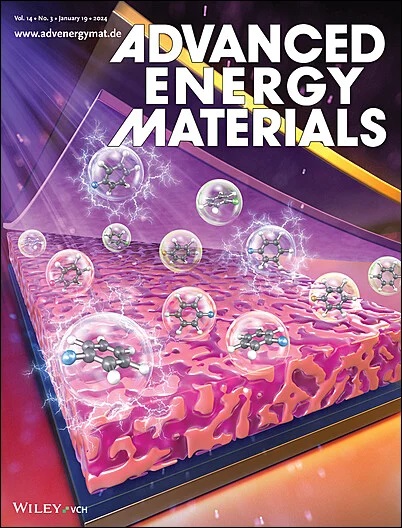Sn-Mediated Local Atomic Ordering Enhances Reversible Anionic Redox Activity in Cation-Disordered Li1.3Mn0.4Nb0.3O2 Cathodes
IF 24.4
1区 材料科学
Q1 CHEMISTRY, PHYSICAL
引用次数: 0
Abstract
Recent advances in lithium-ion batteries have revealed the potential of Li-excess cation-disordered rock salt (DRX) cathodes, which expand the design space for cathode materials. The evidence of facile lattice substitution further provides a key strategy for activating redox reaction centers and enhancing the cycling performance of such materials. Here, the study explores how Sn-mediated local atomic ordering enhances reversible anionic redox activity in Li1.3Mn0.4Nb0.3O2 through the use of aberration-corrected scanning transmission electron microscopy, ex/in situ X-ray techniques, and theoretical calculation. The results demonstrate that Sn incorporation optimizes the local atomic structure, fostering the formation of rapid Li+ diffusion “elevator” pathways and short-range ordered structures, thereby enhancing the Li+ transport network. Additionally, quantitative analysis of the redox pathways and degree of participation for Mn and O during charge–discharge cycles reveals that the Sn-mediated electrode exhibits enhanced anionic O redox activity at high charging voltages, maintaining elevated activity throughout subsequent cycling. This sustained performance not only indicates increased redox capabilities but also suggests improved structural stability. By elucidating the complex interplay between composition, local structure, and performance, this study advances the understanding of DRX materials and underscores the potential of strategic elemental substitution for optimizing disordered cathode materials in next-generation energy storage systems.

求助全文
约1分钟内获得全文
求助全文
来源期刊

Advanced Energy Materials
CHEMISTRY, PHYSICAL-ENERGY & FUELS
CiteScore
41.90
自引率
4.00%
发文量
889
审稿时长
1.4 months
期刊介绍:
Established in 2011, Advanced Energy Materials is an international, interdisciplinary, English-language journal that focuses on materials used in energy harvesting, conversion, and storage. It is regarded as a top-quality journal alongside Advanced Materials, Advanced Functional Materials, and Small.
With a 2022 Impact Factor of 27.8, Advanced Energy Materials is considered a prime source for the best energy-related research. The journal covers a wide range of topics in energy-related research, including organic and inorganic photovoltaics, batteries and supercapacitors, fuel cells, hydrogen generation and storage, thermoelectrics, water splitting and photocatalysis, solar fuels and thermosolar power, magnetocalorics, and piezoelectronics.
The readership of Advanced Energy Materials includes materials scientists, chemists, physicists, and engineers in both academia and industry. The journal is indexed in various databases and collections, such as Advanced Technologies & Aerospace Database, FIZ Karlsruhe, INSPEC (IET), Science Citation Index Expanded, Technology Collection, and Web of Science, among others.
 求助内容:
求助内容: 应助结果提醒方式:
应助结果提醒方式:


